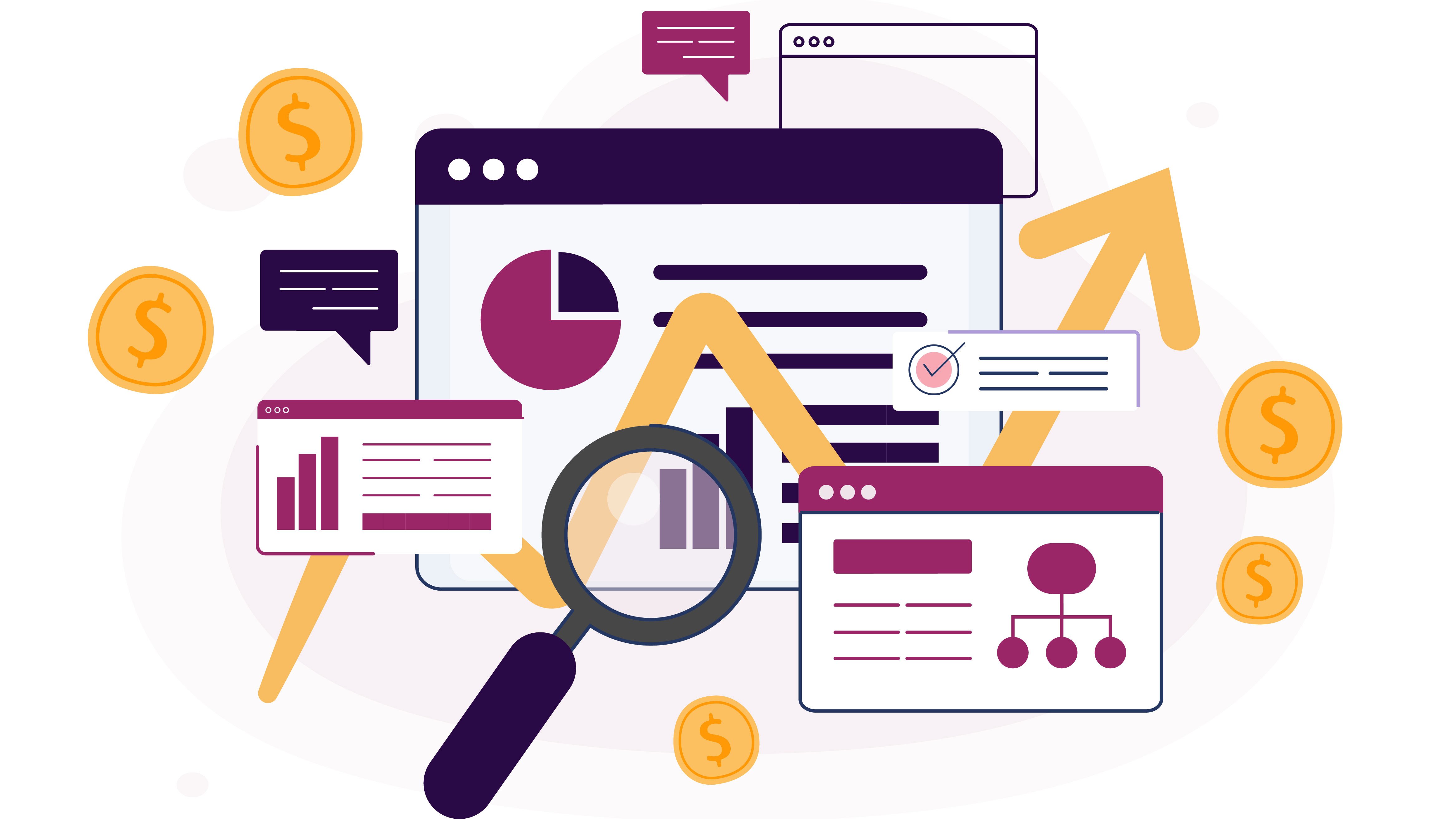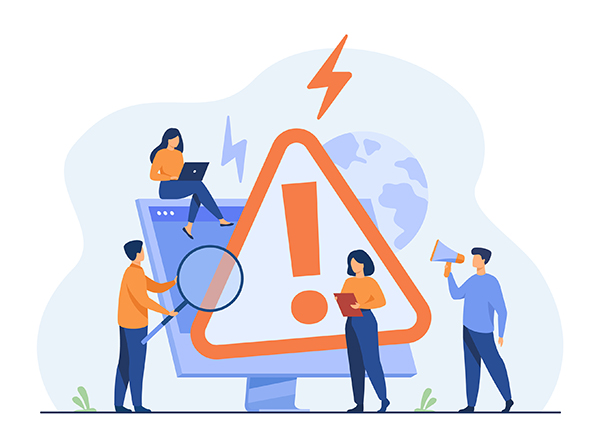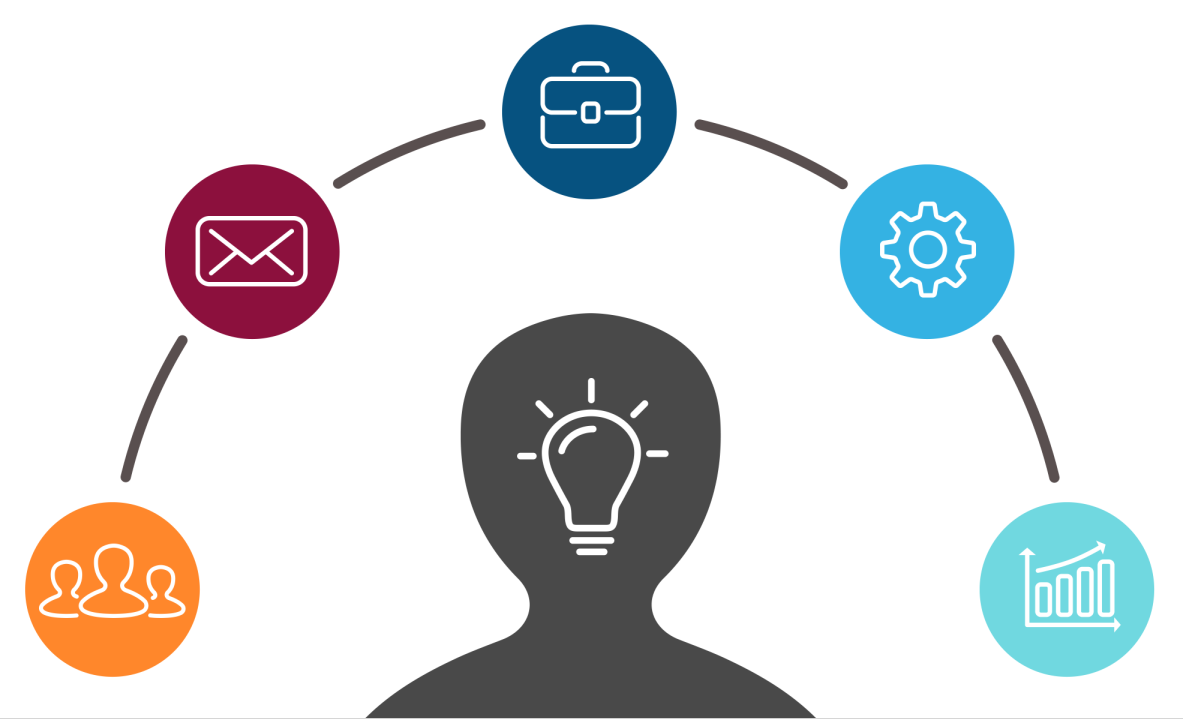
SEO Secrets: Supercharge Your YouTube Videos for Maximum Impact
January 17, 2024
Account-Based Marketing Best Practices for Driving Account Expansion Success
January 18, 2024Importance of Lead Generation
Lead generation is the heartbeat of business growth. It’s not just about acquiring potential customers; it’s about creating a robust pipeline that fuels expansion. In a world where competition is fierce, understanding the intricacies of lead generation becomes paramount. It’s the linchpin that connects marketing efforts to revenue streams.
To embark on a journey of growth, businesses need to embrace a data-driven approach to lead generation. The traditional spray-and-pray marketing tactics are passé. Today, success lies in precision, and precision demands insights. Lead generation metrics are the key to unlocking these insights. They’re the compass guiding businesses through the labyrinth of customer acquisition, helping them discern what works and what doesn’t.
Purpose of the Blog Post
This blog post is not just a stroll through the garden of lead generation metrics; it’s a deep dive into the ocean of possibilities that data-driven insights can offer. The purpose is clear – equip businesses, from startups to seasoned enterprises, with the knowledge and tools they need to navigate the complex world of lead generation metrics successfully.
As we unfold the layers of lead generation metrics, expect revelations that go beyond conventional wisdom. This isn’t just about understanding metrics; it’s about wielding them as powerful instruments for growth. By the end of this journey, you won’t just measure your lead generation efforts; you’ll orchestrate them like a maestro conducting a symphony of success.

Key Lead Generation Metrics
1. Conversion Rate
The conversion rate is the heartbeat of your sales funnel. It’s not just a number; it’s a pulse check on how effectively you’re turning curious onlookers into paying customers. Imagine a scenario: your website attracts a thousand visitors, but only a handful convert. The conversion rate unveils the magic—or the lack thereof—happening in that crucial moment of decision.
Real-Life Example: Let’s take the fictional company “TechMarvel” as an example. By optimizing their website’s user experience and refining their call-to-action buttons, they witnessed a 20% increase in conversion rates within a quarter. This not only boosted their revenue but also validated the power of focusing on this metric.
Tips to Optimize: Simple tweaks can make a significant difference. Test different CTAs, streamline your checkout process, and ensure your website is mobile-friendly. Remember, every improvement in conversion rate is a direct boost to your bottom line.
2. Cost per Lead (CPL)
In the world of marketing, understanding the cost per lead is akin to being handed the keys to a treasure trove. It’s the cost-efficiency compass, guiding marketers to channels that bring in leads without burning a hole in the budget. Imagine investing heavily in a campaign only to realize that the leads it generated cost more than the revenue they brought in—a marketer’s nightmare.
Case Study: The success story of “AdvertiseSmart” exemplifies effective CPL management. By strategically using social media advertising and optimizing their landing pages, they not only reduced CPL by 30% but also witnessed a surge in lead quality.
Strategies to Reduce CPL: Invest in targeted advertising, optimize landing pages, and explore partnerships. The goal is not just to reduce costs but to maximize the quality of leads within your budgetary constraints.
3. Customer Acquisition Cost (CAC)
Customer Acquisition Cost, or CAC, is the financial barometer of your marketing efforts. It gauges the investment required to acquire a new customer, providing invaluable insights into your overall marketing efficiency. Understanding CAC helps businesses make informed decisions about resource allocation and campaign optimization.
Analyzing CAC Across Industries: Different industries have varying CAC benchmarks. While technology companies might have higher CAC due to longer sales cycles, e-commerce businesses often operate with lower CAC. Recognizing these industry nuances is crucial for setting realistic expectations.
Techniques to Lower CAC: Enhance customer retention, explore referral programs, and leverage content marketing. A lower CAC not only boosts profitability but also signifies a more streamlined and efficient acquisition process.
4. Lead-to-Customer Ratio
The lead-to-customer ratio is the bridge between your marketing and sales teams. It quantifies the efficiency of converting leads into paying customers. Picture this: a high influx of leads, but a dismal conversion rate. It’s akin to having a grand party with no guests willing to dance. The lead-to-customer ratio ensures your party is not just lively but also financially rewarding.
Example of Improvement: Consider the company “ConvertMasters.” By implementing a lead nurturing campaign that addressed specific pain points of their leads, they witnessed a 25% increase in their lead-to-customer conversion. It’s not just about getting more leads; it’s about turning them into loyal patrons.
Strategies for Enhancement: Map your customer journey, personalize your communication, and empower your sales team with targeted content. A high lead-to-customer ratio indicates not just marketing prowess but a holistic approach to customer engagement.

Tools for Lead Generation Metrics Analysis
1. Google Analytics
Google Analytics is the compass that guides you through the vast landscape of online metrics. Setting up conversion tracking is not merely a technicality; it’s the foundation for deciphering user behavior. Imagine having a blueprint that unveils which marketing channels are driving conversions, enabling you to allocate resources judiciously.
Step-by-Step Guide: Setting up conversion tracking involves a few clicks and some code snippets. Our step-by-step guide ensures you don’t just activate tracking but understand the narrative it unfolds.
Interpreting Google Analytics Data: Numbers alone are meaningless; it’s the story behind them that matters. Learn how to translate Google Analytics data into actionable insights. Identify the pages where visitors drop off, discern the success of your CTAs, and optimize your website for maximum impact.
2. Customer Relationship Management (CRM) Software
Your CRM software is not just a repository of contact details; it’s a treasure trove of insights waiting to be unearthed. Dive into the functionalities that transform your CRM into a dynamic tool for lead generation analysis.
CRM Features for Lead Generation: From lead scoring to contact segmentation, CRM software offers features designed to enhance your lead generation efforts. Uncover the power of automated lead nurturing, ensuring that your prospects receive tailored content at the right time.
Integration for Comprehensive Insights: Don’t let your CRM operate in isolation. Learn how to integrate it seamlessly with other tools in your arsenal. By merging CRM data with marketing analytics, you create a unified view that empowers decision-making.
3. A/B Testing Tools
A/B testing is the laboratory where you experiment with different variables to decipher what resonates with your audience. It’s not just about changing button colors; it’s about understanding the psychology that triggers conversions.
A/B Testing Success Story: Take a leaf out of the playbook of “OptimizeChamps,” a company that doubled its conversion rates by systematically testing variations in headlines, images, and calls to action. Discover the principles behind their success and apply them to your experiments.
Implementing A/B Testing: A/B testing is not a shot in the dark; it’s a calculated strategy. Learn how to design experiments, collect meaningful data, and draw conclusions that shape your lead generation strategy.
4. Marketing Automation Platforms
Marketing automation is the force multiplier in lead generation. It’s not just about sending emails automatically; it’s about orchestrating a symphony of personalized interactions that guide leads through your sales funnel.
Introduction to Marketing Automation: Understand the fundamental concepts of marketing automation and how it revolutionizes lead nurturing. Witness how it goes beyond email campaigns to encompass social media, content delivery, and lead scoring.
Selecting the Right Platform: The market is flooded with marketing automation platforms. Choose wisely. Our guide outlines key considerations, from scalability to integration capabilities, ensuring you invest in a platform aligned with your business objectives.

Advanced Strategies for Lead Generation Optimization
1. Personalization Techniques
Personalization is not a mere buzzword; it’s the secret sauce that transforms leads into brand advocates. Dive into the art and science of personalization, discovering how it elevates your lead generation game.
Role of Personalization: Understand why personalization matters and how it influences lead engagement. Explore case studies of companies that have mastered the art of making each lead feel uniquely valued.
Creative Ways to Personalize: Personalization extends beyond addressing your leads by their first name. Uncover innovative techniques, from dynamic content that adapts to user behavior to personalized recommendations that resonate with individual preferences.
2. Predictive Analytics
Predictive analytics is the crystal ball that helps you foresee which leads are likely to convert. It’s not about gazing into the future; it’s about leveraging historical data to make informed predictions.
Application in Lead Scoring: Explore how predictive analytics revolutionizes lead scoring. Witness how it goes beyond demographic data, analyzing behavioral patterns to identify leads with the highest propensity to convert.
Integration into Lead Generation Strategies: Predictive analytics is not a standalone tool; it’s a strategic ally. Learn how to integrate it seamlessly into your lead generation strategies, from targeted content delivery to personalized communication.
3. Social Media Integration
Social media is not just a platform for brand visibility; it’s a goldmine for lead generation. Discover the nuances of leveraging social media effectively, turning likes and shares into tangible leads.
Impact of Social Media on Lead Generation: Understand how social media influences the entire lead generation ecosystem. From creating awareness to nurturing leads, explore the multi-faceted role of social platforms.
Measuring Social Media ROI: Social media efforts should translate into measurable returns. Learn how to calculate and optimize your social media ROI, ensuring that every post contributes to your lead generation goals.
4. Retargeting Strategies
Retargeting is the gentle nudge that reminds potential leads of what they’re missing. It’s not about stalking; it’s about strategic positioning to rekindle interest and drive conversions.
Tactics for Re-engagement: Dive into the psychology of retargeting. Learn how to craft compelling ads that resonate with your audience and entice them back into your sales funnel.
Effective Retargeting Plan: Crafting a retargeting plan involves more than just placing pixels. Explore a blueprint that ensures your retargeting efforts are not intrusive but rather persuasive, nudging leads towards conversion.

Challenges in Lead Generation Metrics Analysis
1. Data Quality Issues
The road to effective lead generation analysis is often marred by potholes of data quality issues. Understand the common pitfalls and learn how to navigate them, ensuring that your metrics are not distorted by inaccuracies.
Common Data Quality Challenges: From duplicates to outdated information, explore the challenges that plague lead data quality. Identify these issues early on to prevent skewed metrics and inaccurate decision-making.
Implementing Data Cleansing Practices: Discover actionable steps to cleanse your data. From automated tools to manual audits, learn how to maintain a pristine dataset that forms the foundation for reliable lead generation metrics.
2. Attribution Complexity
Attribution is the puzzle that perplexes even the seasoned marketers. Untangle the complexity, demystify the attribution models, and equip yourself with the knowledge to attribute leads accurately.
Navigating Attribution Challenges: Understand why attributing leads to specific channels is a complex endeavor. Dive into the intricacies of first-touch, last-touch, and multi-touch attribution models, unraveling the pros and cons of each.
Solutions for Accuracy: From advanced attribution tools to adopting a multi-touch approach, explore strategies that enhance the accuracy of your attribution models. Ensure every touchpoint gets its due credit in the lead generation journey.
3. Integration Hurdles
The dream of a seamless data flow often faces the reality of integration challenges. Learn how to integrate different data sources, creating a cohesive ecosystem that fuels comprehensive lead generation analysis.
Identifying Integration Challenges: Recognize the hurdles that hinder seamless data integration. From incompatible formats to siloed systems, understand the common roadblocks and strategize ways to overcome them.
Maximizing Insights Through Integration: Integration is not just about connecting the dots; it’s about amplifying the insights derived from the data synergy. Explore how integrated data analytics opens new avenues for understanding lead behavior.
4. Evolving Consumer Behavior
In a world where consumer behavior is as dynamic as a dance, businesses need to adapt their lead generation strategies to the ever-changing rhythm. Explore the shifts in consumer behavior and learn how to stay in sync.
Understanding Changing Patterns: From the rise of mobile browsing to the impact of social media, delve into the factors shaping consumer behavior. Recognize the patterns that influence how leads discover and engage with your brand.
Embracing Agility: Agility is not just a buzzword; it’s a survival strategy. Learn how businesses can stay nimble, adapting lead generation strategies to align with evolving consumer preferences. The ability to pivot quickly is a competitive advantage.
Future Trends in Lead Generation Metrics
1. Artificial Intelligence (AI) in Lead Scoring
Artificial Intelligence is not a distant future; it’s the present reshaping lead scoring. Explore how AI enhances lead scoring accuracy, analyzes vast datasets, and predicts which leads are most likely to convert.
Overview of AI’s Role: Understand the fundamental role of AI in lead scoring. From machine learning algorithms to predictive analytics, delve into the technological advancements driving AI-powered lead generation.
Examples of AI-Driven Success Stories: Real-life examples highlight the transformative impact of AI in lead generation. Explore how businesses across industries have harnessed the power of AI to achieve remarkable results.
2. Voice Search Optimization for Leads
Voice search is not just a convenience; it’s a burgeoning trend that influences how leads discover businesses. Learn how optimizing content for voice search is poised to become a critical aspect of lead generation strategies.
Rising Importance of Voice Search: Explore why voice search is gaining prominence and how it alters the landscape of lead acquisition. From voice-activated devices to virtual assistants, understand the channels through which leads are interacting.
Strategies for Optimization: What steps can businesses take to optimize their content for voice search? Uncover actionable strategies to ensure your brand remains discoverable in the era of vocal interactions.
3. Blockchain for Transparent Lead Tracking
Blockchain, often associated with cryptocurrencies, is finding its way into lead tracking for its transparency and security. Explore how blockchain technology addresses lead tracking challenges, providing a decentralized and tamper-proof ledger.
Exploring Blockchain’s Role: Understand the principles of blockchain and how they apply to lead tracking. From ensuring data integrity to eliminating fraudulent activities, explore the benefits of a blockchain-driven approach.
Real-Life Examples: Delve into case studies of businesses leveraging blockchain in lead generation. Discover how transparency and security in lead tracking can build trust and enhance customer relationships.
4. Sustainable and Ethical Lead Generation Practices
The future of lead generation is not just about numbers; it’s about responsibility. Explore the growing importance of sustainability and ethics in lead generation, shaping a future where businesses prioritize ethical practices.
Importance of Sustainability and Ethics: Understand why sustainability and ethics are becoming integral to lead generation strategies. From eco-friendly initiatives to transparent communication, explore the facets that define responsible lead generation.
Examples of Ethical Practices: Real-world examples showcase how businesses are adopting sustainable and ethical lead generation practices. Learn from industry leaders committed to making a positive impact on both society and the environment.
Conclusion
In the vast universe of lead generation metrics, businesses find not just numbers but the guiding stars for their growth journey. From mastering the art of conversion rates to navigating the complexities of multi-channel attribution, this exploration has been a roadmap for businesses seeking not just leads but lasting success.
As you embark on your own journey armed with newfound insights, remember that lead generation metrics are not just statistics; they’re stories waiting to be told. Each metric narrates a chapter in the saga of your business’s growth. So, equip yourself with the right tools, embrace the challenges, and dance to the ever-changing rhythm of consumer behavior.
The future of lead generation is dynamic, promising, and filled with opportunities. The metrics are your compass, the tools your allies, and the strategies your secret weapons. So go ahead, measure, analyze, and watch your business grow.



